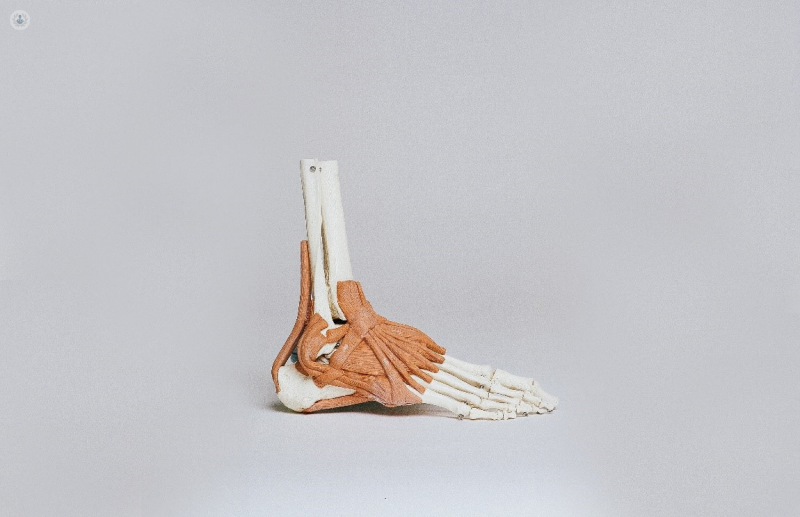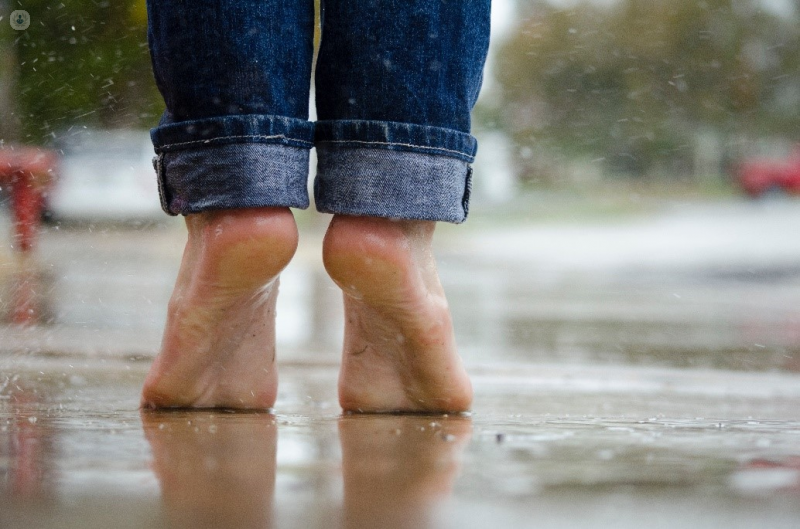Heel spurs: causes, symptoms, treatments and recovery
Written by:If you feel pain and stiffness in your heel, you may be part of the 10 percent of the population that has a “heel spur”. Mr Matthew Solan, a trauma and orthopaedic surgeon based in London and Guildford, gives us an overview of what a heel spur is, what the causes are and the treatments that are available.

What exactly is a heel spur?
A heel spur is a growth from the bone that is harmless but is sometimes associated with pain from the tendons connecting to the heel bone.
There are two common types:
The most common is sometimes seen with pain underneath the heel, known as plantar fasciitis (also called Policeman’s Heel). The plantar fascia is a strong ligament running under the arch/instep of your foot, which is an extension of the Achilles’ tendon and supports the arch. This ligament connects the toes to the heel, providing stability to the foot as you walk.
Read more on plantar fasciitis
There has been controversy as to whether the spur, that is only occasionally seen, causes the pain. In fact, lots of people have a spur and no pain On the other hand, many people suffering from pain have no spur.
A heel spur can also arise at the back of the heel, where it is usually related to the Achilles’ tendon. The back of the heel bone is where the fibres of the Achilles’ tendon attach, allowing the calf muscle to pull you onto tip-toes. Calcium can grow from the bone into the tendon.
Often there is swelling of the tendon itself too, as well as more generalised inflammation called bursitis. All three problems usually co-exist and make this a difficult problem to deal with.
What causes them?
Like all tendon problems (shoulder, elbow, hip and knee included) the cause is “wear and tear”.
Tendons are made from millions of fibres or hairs which become more brittle with age. With ordinary use, a few hairs break every day and the body recovers. With a lot of use; with a sudden change in activity levels; with injury or with high body weight the damage may exceed what “mother nature” can mend.
What symptoms might I experience?
Pain and stiffness, particularly when getting out of bed or after a long period of sitting down, are the typical symptoms.

Swelling is a feature on the back of the heel with an Achilles spur and this makes shoes rub. Swelling is not usually a feature with plantar fasciitis.
Are there any treatments?
Pain under the heel is almost always from plantar fasciitis. Stretches, comfortable shoes, rest and time will be enough for most patients. More than 90 percent resolve in a few months. More stubborn cases benefit from thorough assessment, scans and more advanced therapies. Only a tiny minority require surgery.
An Achilles spur is seen with bursitis (swelling) and wear and tear of the bottom of the Achilles tendon at the back of the heel. The three problems co-exist and so this a difficult problem to cure.
It is important to wear shoes that don’t rub to help reduce irritation of inflamed tissues from heel spurs. Careful assessment and scans can also be used to identify cases where injections may be advisable.
There are operations you can have, but the long recovery period and surgical risks mean that they are very much a last resort.
What is the outlook like?
When the pain is under the heel, recovery can be expected - but this always takes time. Rest, weight loss, supportive shoes and stretches are helpful. Anti-inflammatory pain killers are generally not effective.
A heel spur at the back of the heel, where the Achilles tendon attaches to the bone, requires very different treatment and some compromises in terms of activities.
If you believe you are suffering from any of the symptoms mentioned in this article, book an appointment with Mr Matthew Solan by visiting his profile.


